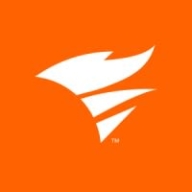

SolarWinds AppOptics and Elastic Observability compete in the observability and monitoring category. SolarWinds AppOptics edges ahead in pricing and support, while Elastic Observability takes the lead in feature robustness according to user reviews.
Features: SolarWinds AppOptics includes detailed monitoring, integrations, and ease of use. Elastic Observability offers powerful data visualization, extensive search capabilities, and flexibility. Users find Elastic Observability's features more robust and valuable.
Room for Improvement: SolarWinds AppOptics users mention enhanced customization and advanced alerting capabilities. Elastic Observability users point to improved simplicity and better documentation. Both products have areas needing enhancements, but Elastic Observability's complexity remains a notable concern.
Ease of Deployment and Customer Service: SolarWinds AppOptics is praised for straightforward deployment and responsive customer support. Elastic Observability's deployment is more intricate, but its support also has positive feedback. Users find SolarWinds AppOptics simpler to deploy.
Pricing and ROI: SolarWinds AppOptics is considered cost-effective with quick return on investment. Elastic Observability, although pricier, is perceived as offering better value for its comprehensive capabilities. Users see Elastic Observability as a worthy investment despite higher initial costs.


Elastic Observability is primarily used for monitoring login events, application performance, and infrastructure, supporting significant data volumes through features like log aggregation, centralized logging, and system metric analysis.
Elastic Observability employs Elastic APM for performance and latency analysis, significantly aiding business KPIs and technical stability. It is popular among users for system and server monitoring, capacity planning, cyber security, and managing data pipelines. With the integration of Kibana, it offers robust visualization, reporting, and incident response capabilities through rapid log searches while supporting machine learning and hybrid cloud environments.
What are Elastic Observability's key features?Companies in technology, finance, healthcare, and other industries implement Elastic Observability for tailored monitoring solutions. They find its integration with existing systems useful for maintaining operation efficiency and security, particularly valuing the visualization capabilities through Kibana to monitor KPIs and improve incident response times.
AppOptics is a SaaS-based simple, powerful and affordable Infrastructure & Application monitoring for custom on-premises, cloud, and hybrid systems.
Your business runs on applications, and when they go down or run slowly, it can impact the business in lost productivity, customers, or revenue. To add to the complexity, your IT environment is changing, and workloads can be spread across data centers, and cloud resources. You need to monitor the availability and performance of applications and infrastructure, regardless of where they are, so you can identify potential issues early and address them before they impact users
We monitor all Application Performance Monitoring (APM) and Observability reviews to prevent fraudulent reviews and keep review quality high. We do not post reviews by company employees or direct competitors. We validate each review for authenticity via cross-reference with LinkedIn, and personal follow-up with the reviewer when necessary.